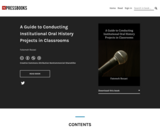
Word Count: 3069
(Note: This resource's metadata has been created automatically by reformatting and/or combining the information that the author initially provided as part of a bulk import process.)


Word Count: 3069
(Note: This resource's metadata has been created automatically by reformatting and/or combining the information that the author initially provided as part of a bulk import process.)

Short Description:
A Gothic anthology of selections from more than 200 years of Gothic works in the public domain, this textbook covers major trends, tropes and periods in the development of Gothic literature from 1764 to the present.
Long Description:
A Guide to the Gothic is an openly licensed, online textbook that presents a comprehensive examination of the genre. In addition to critical essays exploring major periods, tropes and trends of the Gothic tradition, A Guide to the Gothic includes selections from more than 200 years of Gothic works that are in the public domain. Intended for instructors of Gothic literature seeking a collaborative resource to educate and inspire the next generation of Gothic scholars.
Word Count: 216403
(Note: This resource's metadata has been created automatically by reformatting and/or combining the information that the author initially provided as part of a bulk import process.)
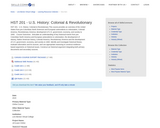
This course provides an overview of the United States from pre-Columbian North American and European antecedents to colonization, Colonial America, Revolutionary America; development of U.S. government, economy, and society to 1840.
Course Outcomes:
1. Articulate an understanding of key historical events from pre-Columbian North America and European antecedents to colonization, the development of slavery, Native American history, Colonial America, Revolutionary America and the development of U.S. government, economy, and society to 1840.
2. Identify and investigate historical theses, evaluate information and its sources, and use appropriate reasoning to construct evidence-based arguments on historical issues.
3. Construct an historical argument integrating both primary documents and secondary sources.
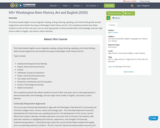
This theme-based English course integrates reading, writing, listening, speaking, and critical thinking skills around assignments and activities focusing on Washington State History and Art. This competency-based class allows students to work at their own pace, exit at a level appropriate to demonstrated skills and knowledge, and earn high school credits in English, Lab Science, and/or electives.
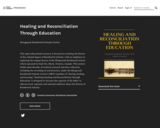
Short Description:
This open educational resource is focused on teaching the history of the colonial legacy of Residential Schools, with an emphasis on exploring the unique history of the Shingwauk Residential School which operated in Sault Ste. Marie, Ontario, Canada. This project builds upon decades of archival research and data collection, including the recording of oral histories, under the Shingwauk Residential Schools Centre’s (SRSC) mandate of ‘sharing, healing, and learning.’ ‘Realizing Healing and Reconciliation through Education’ is designed to increase the capacity of the SRSC to educate local, regional, and national audience about the history of Residential Schools.
Long Description:
The Truth and Reconciliation Commission of Canada’s Final Report cited healing, reconciliation, and restoring the relationship between Indigenous and non-Indigenous Canadians as a critical priority for all Canadians. Moreover, the Commission exhorted Canada’s museums and galleries to work with Indigenous Peoples to better present their cultures and histories, including histories of assimilation, cultural loss and reclamation. The Shingwauk Residential Schools centre (SRSC) is taking up the charge to realize this vision through a multi phase education and outreach strategy, this ebook is part of that educational project.
This open educational resource is focused on teaching the history of the colonial legacy of Residential Schools, with an emphasis on exploring the unique history of the Shingwauk Residential School which operated in Sault Ste. Marie, Ontario, Canada. This project builds upon decades of archival research and data collection, including the recording of oral histories, under the SRSC’s mandate of ‘sharing, healing, and learning.’ ‘Realizing Healing and Reconciliation through Education’ is designed to increase the capacity of the SRSC to educate local, regional, and national audience about the history of Residential Schools.
Word Count: 13410
(Note: This resource's metadata has been created automatically by reformatting and/or combining the information that the author initially provided as part of a bulk import process.)
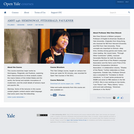
This course examines major works by Hemingway, Fitzgerald, and Faulkner, exploring their interconnections on three analytic scales: the macro history of the United States and the world; the formal and stylistic innovations of modernism; and the small details of sensory input and psychic life. WARNING: Some of the lectures in this course contain graphic content and/or adult language that some users may find disturbing.

This course explores artistic achievement in a culture that over the past century has engaged in constant and intense imaginative self-renewal. The class studies film, narrative (e.g., Márquez’s One Hundred Years of Solitude), and poetry. Conducted in Spanish.
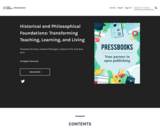
This open textbook is designed primarily for teacher candidates in Queen’s University’s Faculty of Education enrolled FOUN 102: Historical and Philosophical Foundations of Education. By using this open textbook to support learning in the course, we hope to free students from the costs of textbooks (and of the challenge of receiving textbooks in the midst of this global pandemic) and create a space that permits bounded exploration of what it means to think, live, and breathe philosophy and history in the multiverse that is education. This open textbook is supported financially by a grant made available by Open Library Services at the Queen’s University Library.
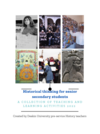
A resource created by Deakin pre-service History teachers
Short Description:
The teaching and learning activities in this book were designed by pre-service History teachers at Deakin University, Australia. The activities cover a wide range of topics from ancient history through to early twenty-first century history and are designed to develop students' historical thinking.
Long Description:
Most learning and teaching activities that get created in initial teacher education courses never get seen again once they are assessed as part of an assignment. However, pre-service History teachers undertaking a Master of Teaching at Deakin University have created and shared some of the learning and teaching activities they designed as part of a renewable assignment. This Open Education Resource (OER) contains activities on ancient history, empires, twentieth century world history and even early twenty-first century history, with a focus on building historical thinking. It showcases their emerging content and pedagogical understanding as well as their capacity to engage with open pedagogy and design copyright compliant materials. Although the activities have been mostly designed around the curriculum requirements of the Victorian Certificate of Education (VCE), they are easily adapted to fit other state and international curriculum contexts.
Word Count: 37875
(Note: This resource's metadata has been created automatically by reformatting and/or combining the information that the author initially provided as part of a bulk import process.)
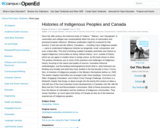
Since the 18th century, the historical study of “Indians,” “Natives,” and “Aboriginals” in universities and colleges was contextualized within the story of colonization and growing European influence. Whatever justification might be mustered for that practice, it had real and dire effects: Canadians — including many Indigenous people — came to understand Indigenous histories as tangential, small, unimportant, and even a blind alley. This kind of thinking enabled Canadian authorities and citizens to regard Indigenous communities as being “without history,” as in, outside of history, which we can agree in modern times is simply untrue, as this book strives to show. The preface introduces you to some of the practices and challenges of Indigenous history, focusing on the nature and quality of sources, innovative historical methodologies, and the leading historiographical trends (that is, what historians are thinking very broadly and what they have studied in the last decade or four). It turns, then, to histories of Indigenous peoples in the Western Hemisphere before ca. 1500. The twelve chapters that follow are arranged under three headings: Commerce and Allies, Engaging Colonialism, and Culture Crisis Change Challenge. And there is a thirteenth chapter that brings us deep enough into the twenty-first century to allow a visit with two of the most important recent developments in Canadian civic life: Idle No More and the Truth and Reconciliation Commission. Both of these processes arose from the failures of colonialism and the resilience of Indigenous communities. They reveal, therefore, as much about the history of Canada as they do of the historical experiences of Indigenous peoples.

The histories of information, communication, and computing technologies have attracted attention from scholars across a variety of disciplines. This course introduces students to prominent voices in these topics across fields. Alongside readings introducing students to this broad scholarly terrain, the course offers guidance in research and writing for publication based on the reality that PhD candidates on the job market need to be published authors, and that every term paper has the potential to be a journal article. We work towards publication by reading widely-cited scholarly histories both for their content and for what they can tell us about scholarly craft.

This seminar offers a critical review of scholarship on Islamic architecture through close reading of scholarly texts, museum exhibitions, and architectural projects. It also tackles methodological and historiographical questions about the field’s formation, genealogy, recent expansion, and its evolving historical and theoretical contours.
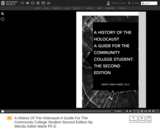
A History Of The Holocaust: A Guide For The Community College Student: The Second Edition.

This course explores recent historical and anthropological approaches to the study of medicine and biology. Topics might include interaction of disease and society; science, colonialism, and international health; impact of new technologies on medicine and the life sciences; neuroscience and psychiatry; race, biology and medicine. Specific emphasis varies from year to year.
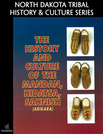
History & Culture of the Mandan Hidatsa & Sahnish (Arikara) is a guide to the Three Affiliated Tribes nation, past and present. The book is divided into three sections: one for each tribe. Elders, scholars, and other experts from the nation contributed the content of this book, which was reviewed by Nueta Hidatsa Sahnish College and published by the North Dakota Department of Public Instruction (NDDPI) for use in middle and high school North Dakota Studies classes, as well as in higher education.
The MHA nation is known as the following in its languages: Mandan: Miiti Naamni, Hidatsa: Awadi Aguraawi, Arikara: ačitaanu' táWIt. The Fort Berthold Indian Reservation shares geography with western North Dakota, with land on either side of the Missouri River basin. New Town is this sovereign nation’s capital.
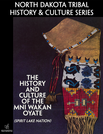
History & Culture of the Mni Wakan Oyate Spirit Lake Nation is a guide to the Spirit Lake nation, past and present. Elders, scholars, and other experts from the nation contributed the content of this book, which was reviewed by Cankdeska Cikana Community College (English: Little Hoop Community College) and published by the North Dakota Department of Public Instruction (NDDPI) for use in middle and high school North Dakota Studies classes, as well as in higher education.
The Spirit Lake Nation’s name in the Santee Dakota language is “Mni Wakan Oyate” (also transcribed “Mniwakaƞ Oyate”). The nation was formerly called the Devils Lake Sioux Tribe in various English-language materials. It is comprised of the Pabaksa (Iháŋkthuŋwaŋna), Sisseton (Sisíthuŋwaŋ) and Wahpeton (Waȟpéthuŋwaŋ) bands of the Dakota people. The Spirit Lake Dakota Reservation shares geography with eastern North Dakota, beside Devils Lake. Fort Totten is the capital of this sovereign nation.

History & Culture of the Standing Rock Oyate is a guide to the Standing Rock nation, past and present. Elders, scholars, and other experts from the nation contributed the content of this book, which was reviewed by Standing Rock Community College and published by the North Dakota Department of Public Instruction (NDDPI) for use in middle and high school North Dakota Studies classes, as well as in higher education.
The Standing Rock Reservation (Lakota: Íŋyaŋ Woslál Háŋ) shares geography with southern North Dakota and with South Dakota. The capital of this sovereign nation is Fort Yates.

History & Culture of the Turtle Mountain Band of Chippewa is a guide to the Turtle Mountain nation, past and present. Elders, scholars, and other experts from the nation contributed the content of this book, which was reviewed by Turtle Mountain Community College and published by the North Dakota Department of Public Instruction (NDDPI) for use in middle and high school North Dakota Studies classes, as well as in higher education.
The Turtle Mountain nation is called Mikinaakwajiw-ininiwag in the Ojibwe language. This sovereign nation’s capital is Belcourt. The Turtle Mountain Indian Reservation shares geography with northern North Dakota, along the border with Canada. The rest of its land base exists as parcels of trust land across Montana, North Dakota, and South Dakota, defying easy summarization.

This course focuses on an in-depth reading of Principia Mathematica Philosophiae Naturalis by Isaac Newton, as well as several related commentaries and historical philosophical texts.

This class examines the history and theory of historic preservation, focusing on the United States, but with reference to traditions and practices in other countries. The class is designed to examine the largely untold history of the historic preservation movement in this country, and explore how laws, public policies and cultural attitudes shape how we preserve or do not preserve the built environment. The class will give students a grounding in the history, theory and practice of historic preservation, but is not an applied, technical course.